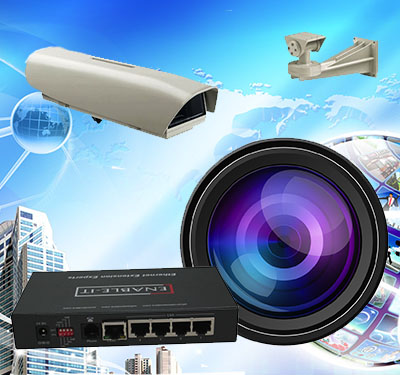
Today’s security professional’s duties bear little resemblance to those of the security guard of the mid-twentieth century. Gone are the days when padlocks and fences were sufficient to keep intruders at bay; back when a guard’s duties consisted of making patrols and authorizing admittance consisted of the wave of a hand.
When the twenty-first century ushered in the adoption of IP camera systems, a new era of security dawned. Anyone hoping to become a security professional today needs, at the very minimum, working knowledge of IP cameras and video management software.
The growing prevalence of IP devices tore down the wall separating IT and security. The very fact that IP cameras reside on an organization’s local area network (LAN), links the two. And when you come down to it, it’s all about risk management; catching intruders, whether they’re virtual intruders like hackers or physical intruders like thieves or gunmen.
However this doesn’t mean IT and security require the same skills. Just because an individual knows how to install a firewall doesn’t mean she knows how to assess an IP camera. So more and more, we see the responsibility for choosing IP camera systems being assigned to the security department. Accordingly, security guards wishing to say in the field are arming themselves with knowledge.
With that in mind we present questions security executive charged with selecting an IP camera surveillance system should be asking him/herself
- Do I need to see a stranger’s facial features for the purpose of forensic identification?
- Do I want to recognize that individual as a known employee?
- Do I just want to detect that an individual is on the premises?
Resolution?
In digital imaging, the smallest element of a picture is called a pixel. Pixels are usually square and arranged in a two dimensional grid. An image with a resolution of 1280 x 1024 is a frame containing a count of 1280 pixels from left to right and 1024 from top to bottom. Work out the math and we have a frame composed of 1,310,000 pixels. And since every 1,000,000 pixels is expressed as 1 megapixel. We are looking at a resolution of 1.3 megapixels.
- If facial recognition is required, features must be clear so a minimum of 70 – 80 pixels/foot is recommended.
- If the purpose is to recognize an employee or a known visitor, 50 pixels/foot should suffice since the mind tends to “connect the dots”
- If the purpose is mere detection of the person with no notice given to his facial characterisitics, a camera need only supply a resolution measuring 5 pixels/foot
In short, the more megapixels, the better the resolution.

Will I be placing some cameras in areas that are fully lit during business hours, but minimally lit after hours?
Light?
Day/Night Cameras
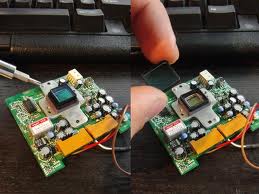
Most cameras have an IR filter over the lens to filter out the infra-red lightwaves. Day/night cameras automatically set them aside when the lighting is low so that more light can reach the sensor.
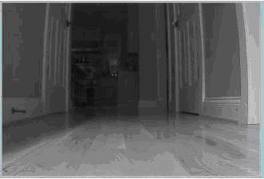
Some day/night cameras switch from color to black and white mode after hours which increases light sensitivity.
Will some cameras be in areas of contrasting light where the field of view includes well-lit areas as well as darker ones places like the main entrance of a hotel at night where guests are crossing over from the relative darkness of the street to the bright illumination of the lobby, or a parking area or garage where the bright headlights of cars constantly alter the range of light.
Wide Dynamic Range (WDR)?
In areas with a significant range of light variation, a conventional camera cannot change its shutter speed or iris settings to adjust so it will either focus on the foreground and black out the background or light the background while in the process burning out the foreground.

However, a camera with Wide Dynamic Range (WDR) capability uses a special technique called multi-frame imaging to capture the light variations and heighten all the details in the area of view.
Video Management Software

Whether he/she is responsible for a single office building, a flowing hospital setting, or a multi-building college campus, a security official needs to understand video management software, since it is critical in controlling, storing, and managing video.
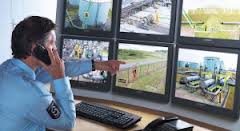
Video management software (VMS) can be installed on any Windows computer and its applications tailored to meet many situations. At its most basic, VMS will allow guards and administrators to stream live video from each camera separately or from several simultaneously on a video wall or divided monitor.
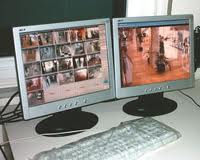
Another useful feature in a large facility is carousel viewing in which the security officer can determine which cameras are included in a rotating cycle. A live feed will be highlighted and featured for a set period of time before giving way to the next camera’s field of view. This allows the guard on duty to cycle through different areas or sections without the monotony brought on from trying to view the whole screen of windows at once while also having the full set in view.
With the right VMS, the guard on duty can
- Record and retrieve video,
- Control PTZ cameras with a joystick
- Add digital PTZ function to a live feed.
Video management software with video analytics can also be set to issue alerts if motion is detected or a camera has been tampered with. Alerts can also be issued if
an object has been left attended for a set period of time
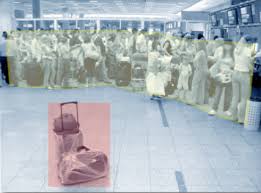
or a boundary has been crossed
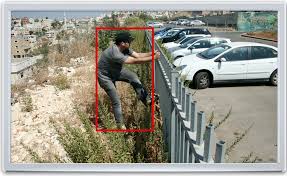
And should police request stored video for a forensic investigation, VMS will allow security to find and retrieve specific recorded events without going through all the archived video.
The Takeaway?
An ambitious security guard should take it upon himself to continually update his or her computer skills, for who knows what degree of technical expertise will be required in the future. Think about it – as more and more organizations adopt The Cloud, the day may soon be upon us when IT and Security will find themselves sharing the same office.
Kintronics is more than happy to supply information to anyone seeking it. We are the experts in IP camera systems and VMS. Call one of our sales engineers at 914-944-3425 or fill out an information request form.